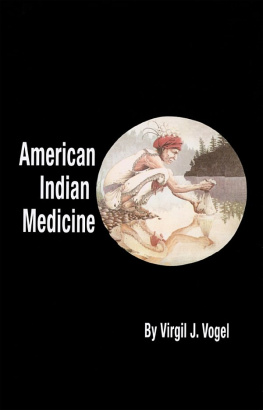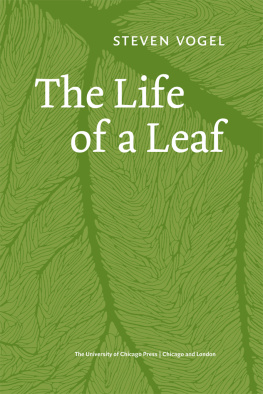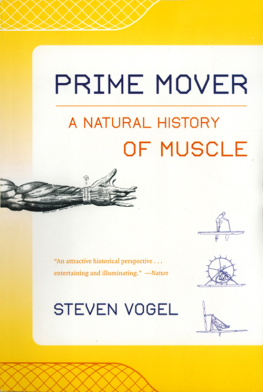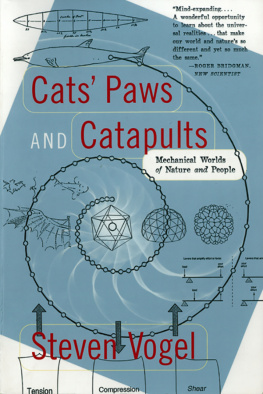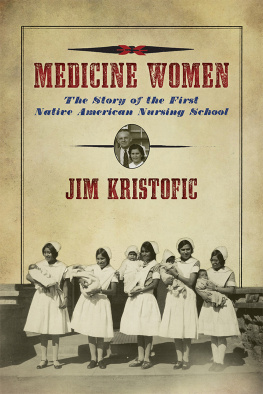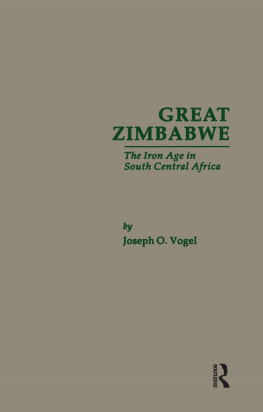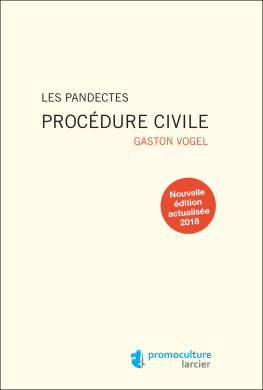Vogel - American Indian Medicine
Here you can read online Vogel - American Indian Medicine full text of the book (entire story) in english for free. Download pdf and epub, get meaning, cover and reviews about this ebook. publisher: University of Oklahoma Press Norman, genre: Art. Description of the work, (preface) as well as reviews are available. Best literature library LitArk.com created for fans of good reading and offers a wide selection of genres:
Romance novel
Science fiction
Adventure
Detective
Science
History
Home and family
Prose
Art
Politics
Computer
Non-fiction
Religion
Business
Children
Humor
Choose a favorite category and find really read worthwhile books. Enjoy immersion in the world of imagination, feel the emotions of the characters or learn something new for yourself, make an fascinating discovery.
American Indian Medicine: summary, description and annotation
We offer to read an annotation, description, summary or preface (depends on what the author of the book "American Indian Medicine" wrote himself). If you haven't found the necessary information about the book — write in the comments, we will try to find it.
American Indian Medicine — read online for free the complete book (whole text) full work
Below is the text of the book, divided by pages. System saving the place of the last page read, allows you to conveniently read the book "American Indian Medicine" online for free, without having to search again every time where you left off. Put a bookmark, and you can go to the page where you finished reading at any time.
Font size:
Interval:
Bookmark:
The Civilization of the American Indian Series

American Indian Medicine
by VIRGIL J. VOGEL
University of Oklahoma Press
Norman
To Louise, Johnny, Carol, and Eugene
By Virgil J. Vogel
Indian Place Names in Illinois (Springfield, Illinois, 1963)
American Indian Medicine (Norman, 1970)
This Country Was Ours: A Documentary History of the American Indian (New York, 1972)
Iowa Place Names of Indian Origin (Iowa City, 1983)
Indian Place Names in Michigan (Ann Arbor, 1986)

2800 Venture Drive
Norman, Oklahoma 73069
www.oupress.com
Copyright 1970 by the University of Oklahoma Press, Norman, Publishing Division of the University. Manufactured in the U.S.A. Paperback published 1990.
All rights reserved. No part of this publication may be reproduced, stored in a retrieval system, or transmitted, in any form or by any means, electronic, mechanical, photocopying, recording, or otherwiseexcept as permitted under Section 107 or 108 of the United States Copyright Actwithout the prior permission of the University of Oklahoma Press.
For information about permission to reproduce selections from this book, write to Permissions, University of Oklahoma Press, 2800 Venture Drive, Norman, Oklahoma 73069 or email rights.oupress@ou.edu.
ISBN 978-0-8061-2179-6 (paperback : alk. paper)
ISBN 978-0-8061-8976-5 (ebook : mobipocket)
ISBN 978-0-8061-8977-2 (ebook : epub)
American Indian Medicine is Volume 95 in The Civilization of the American Indian series.
This eBook was converted from the original source file by a third-party vendor. Readers who notice any formatting, textual, or readability issues are encouraged to contact the publisher at ebooks@ou.edu.
Preface to the Paperback Edition
When American Indian Medicine was first published twenty years ago, it had few rivals in its field. Often the material available in obscure places had a narrow focus, dealing with particular tribes or regions or the treatment of specific ills. For a long time the prevailing view was that Indian medicine was a branch of folklore and had little scientific interest.
There were some notable exceptions. Among the earliest was Dr. Jacob M. Toner, whose Address to the Rocky Mountain Medical Association, 1877 (Virginia Medical Monthly, August, 1877) praised Indian medical practitioners for, among other things, their use of syringes, sutures, and the enema, their knowledge of anatomy, and their childbirth practices. Dr. Ale Hrdlika treated Indian healing practices with considerable respect in his Physiological and Medical Observations among the Indians of Southwestern United States and Northern Mexico (1908) and, a generation later, in his article, Disease, Medicine and Surgery among the American Aborigines (Journal of the American Medical Association, November 12, 1932). Dr. Harlow Brooks, who was intimately acquainted with Ojibwa and Navajo medicine, left no doubt of his favorable opinions in his two articles, both entitled The Medicine of the American Indian, in Bulletin of the New York Academy of Medicine, June, 1929, and Journal of Laboratory and Clinical Medicine, October, 1933. Contemporary with Hrdlika and Brooks, Dr. Eric Stone brought forth his little book, Medicine among the American Indians (1932; reprint, 1962), which listed many medicinal herbs and their uses among Indians and praised Indian practices in childbirth, wounds, and fractures. He pointed out that fifty-nine drugs then listed in the U.S. Pharmacopeia were borrowed from the Indians.
The activities of Indian medicine men drew the favorable attention of William T. Corlett in The Medicine Man of the American Indian and His Cultural Background (1935). Rounding out this decade of rediscovery was Wilton Krogmans article, Medical Practices and Diseases of the Aboriginal American Indians (Ciba Symposia, April, 1939).
Still, the majority of the medical profession kept its distance from what was regarded as little more than bizarre superstition. Most writing in the field was done by anthropologists, ethnobotanists, folklorists, and pharmacists. My own interest in the subject was first attracted by Margaret Kreigs Green Medicine (1964), which dealt with the search for new botanical drugs. I knew of claims that some Indian medicinal substances were effective in treating certain ills, not to mention their psychological effect. As one without medical training, I felt unqualified to make a scientific study of Indian medicine, but believed I might trace the history of Indian drugs and medical practice and their influence on conventional medicine.
As earlier noted, this study was accepted for a Ph.D. dissertation in the University of Chicago history department. The work was mainly done in libraries and archives. Although I had briefly visited about sixty Indian reservations and communities, I was not trained in anthropological fieldwork, and, in any case, the tyranny of time dictated that a field study would have a narrow focus. The libraries were already crowded with forgotten tomes containing the results of narrow studies. I am grateful that my mentors, Professor Daniel Boorstin, Dr. Lester King, and Professor Fred Eggan, tolerated a survey of the curative methods and the medicinal drugs of the Indians of the entire United States. Such a project required, among other things, an examination of the journals, letters, and accounts (published or unpublished) of dozens of explorers, missionaries, traders, and military personnel. The resulting manuscript was accepted for my degree in 1967, and, after some revision and expansion, it was accepted for publication by Savoie Lottinville at the University of Oklahoma Press. It was published in 1970, and a paperback edition appeared in 1973, by arrangement with Ballantine. Though the paperback edition sold out quickly, the cloth edition remained in print through five printings, ending in 1990. Presently the University of Oklahoma Press is issuing the first paperback edition under its own banner, and for this I was invited to write a new preface, which affords an opportunity to deal with certain questions that have arisen.
According to reports, this book was in demand among young people captivated by the drug culture. They were probably disappointed, because the number of psychoactive drugs used by American Indians was small. Some popular drugs, such as the adventive marijuana, were not used at all by early American Indians. The American hemp plant (Apocynum cannabinum) was used by Indians mainly for cordage. Some hallucinogenic fungi and the peyote cactus were used in Mexico, and the latter spread slowly into the United States, but did not become important here until after 1890.
In western South America, coca leaves were widely used, and their derivative, cocaine, a local anesthetic, was eventually adopted in conventional medicine. W. E. Safford first listed the native American drugs of this class in his forgotten article, Narcotic Plants and Stimulants of the Ancient Americans, published in the Annual Report of the Smithsonian Institution for 1916.
From letters I received, it appeared that some readers wanted a guide to self-treatment. I declared in my original preface that I had no medical training and could give no judgment on remedies or treatments described, and I certainly had no quarrel with scientific medicine. To discourage use of my book for self-treatment, I avoided details of dosage or methods of preparation. Since some plant medicines can have toxic or even fatal consequences, it is hazardous for inexpert persons to use them.
Next pageFont size:
Interval:
Bookmark:
Similar books «American Indian Medicine»
Look at similar books to American Indian Medicine. We have selected literature similar in name and meaning in the hope of providing readers with more options to find new, interesting, not yet read works.
Discussion, reviews of the book American Indian Medicine and just readers' own opinions. Leave your comments, write what you think about the work, its meaning or the main characters. Specify what exactly you liked and what you didn't like, and why you think so.

